Color Wheel Complementary Colors
& Split-Complementary Colors
Color wheel complementary colors & split complementary colors are key to paint mixing and home decorating. Many great color combinations are built on complementaries! Here's some essential info (down to the correct spelling ;-)
1. Color Wheel: Complementary Colors & Paint Mixing
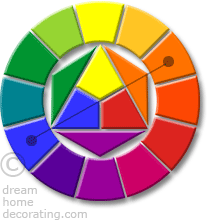
Color Wheel
Complementary Colors
What are complementary colors?
Complementary colors are any two hues that sit directly opposite each other on the color mixing wheel.
When you mix these two hues 1:1, they "complement" (=complete) each other to a neutral grey. (At least that's the theory. Real-world paint pigments usually produce a murky grayish-brown ;-)
The concept of complementaries was a by-product of 18th-century color mixing theory, which showed that you can create all paint colors out of three primaries (yellow, red, blue). It was developed mainly by painters - and never intended for use in home decorating! Click to see how color mixing works.
The mixing process of the 3-primary color wheel gives you (roughly) six sets of complementaries:

The Complementary-Color
Wall Paint Trick
Stir a bit of the complementary color into your wall paint. This will
- add complexity and depth to your paint, and
- take any 'new' or fake edge off the paint color and make it look more natural.
2. Color Wheel: Split-Complementary Colors
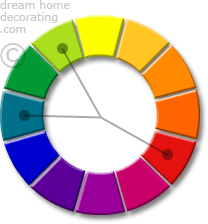
Split Complementary Colors
Split complementary colors come in sets of three: one hue combined with the hues on either side of its complementary color.
Split complementary colors are very useful in creating color combinations for design/decorating projects.
Below is a full set of split complementary colors from the color mixing wheel. (These are not your only choice, though! Check out the four-primary color wheel for more interesting color ideas!)

3. Color Wheel Complementary Colors
For Interior Decorating
Having said that complementary colors are all about paint mixing and not about decorating, I'll admit that complementaries come in very handy if you need an accent color (or just a bit of relief from too much of the same thing).
a) Red-Green
Good Examples:
♦ Many authentic Tuscan homes are decorated in beautiful red-green complementary palettes.
♦ Also, check out both my red and green color palette collections for several gorgeous examples.
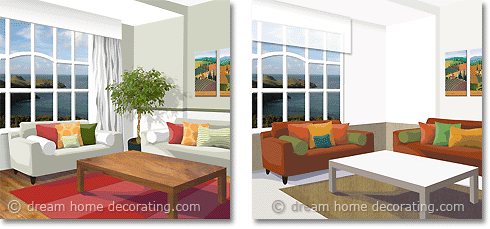
Color Wheel Complementary Colors: Desaturated Greens & Glowing Reds
(Both color schemes were inspired by the 'Tuscan' paintings on the wall)
Red & green are Mother Nature's favorite complementary colors, and they can work very well in interiors, too. The problem is usually not with the red (which can, of course, attract too much attention) but with the green, which can look a bit fake if you have real green outside the window, e.g. trees, a garden, or farmland.
The solution is to use slightly desaturated greens, or at least mix several hues, tints & shades of green into the color scheme.
So for example, the room above (left) plays off a glowing, saturate red against softly muted sage green walls, while the one to the right shows a murkier, brownish version of the red-green complementary color scheme: rust & olive (with a few teal/turquoise accents thrown in).
b) Blue-Orange
Good Examples:
♦ The best room examples are on the page about orange bedrooms.
♦ The page about blue bedrooms has some excellent pics as well.
♦ Blue accents feature predominantly in my orange color palettes.
♦ Finally, the page about Tuscan paint colors has good examples of light or rusty oranges with blue.
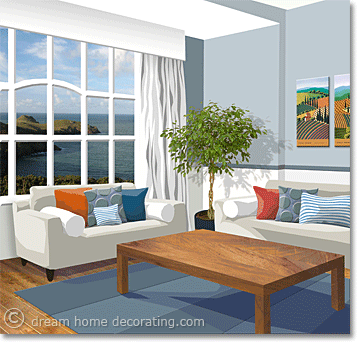
Color Wheel Complementary Colors: Create 'orange' accents ...
... with wood stain, wall art & a few cushions.
Blue is everyone's favorite color, but it can look cold on its own. By combining it with some version of its complementary color, you can instantly raise the energy level in the room and add interest to the color scheme.
As you can see in the illustration, you don't need a vibrant, saturate orange to achieve this:
- 'Orangey' wood colors are perfect for creating color wheel complementary color schemes with blue;
- Rusty or burnt orange is less eye-catching but equally balancing;
- Earthy paint colors, like burnt ocher, or spice colors like curry, turmeric, cumin and chili make great 'complementary' colors for a blue color scheme, too.
c) Purple-Yellow
Purple/yellow is the toughest complementary color scheme to get right in home decorating. A room in bright, saturate purple and yellow will generally look garish and unsophisticated (I'm sure there are exceptions, but I haven't seen them).
Good Examples:
♦ The collection of purple bedrooms shows how amazing purple can look with desaturated, deep golden or sandstone 'yellows'.
♦ Also, check out the 'hip hotel' color palettes for a few purple-yellow combinations that are definitely on the quirkier side ;-)
♦ Finally, there's a very subtle and sweet yellow-violet bedroom on the page about Swedish country decorating.
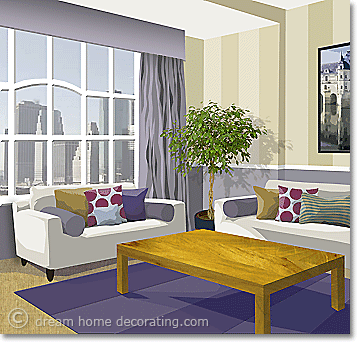
Color Wheel Complementary Colors:
Muted 'yellow' (e.g. straw/mustard/brass) plus dusky plum
One way to pull off a yellow/purple complementary color scheme is to mute/desaturate it into plum + 'dusty'/muddied yellow. Mustard yellow, with its greenish-grey bias, works a treat. Yellow-hued neutrals, e.g. pale straw colors, can look great, too.
4. Complementary/Complimentary: Which Spelling Is Correct?
E ... Complementary: Definition

"Complementum" is Latin and means "something that fills up, completes, or makes perfect". Complementary colors, when they're mixed 1:1, "complement"= complete each other to a neutral grey.
I ... Complimentary: Definition
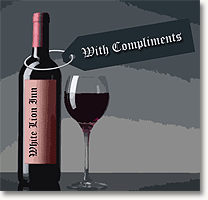
"Complimentary" can have several meanings. Here are the two main ones:
1. "Expressing admiration; expressing or containing a compliment" (a complimentary remark, a complimentary film review)
2. "Given free as a courtesy or favor" (e.g. complimentary tickets, or a complimentary bottle of wine at your hotel).
Click A Pic For More Info:
For a commercially available color wheel (with complementary colors), check these out:
The following books provide loads of color scheme inspiration, including gorgeous color wheel complementary combinations:
Yet to find the information you're looking for? Type a word or phrase into the search box below:
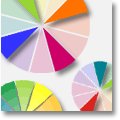
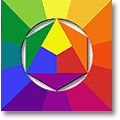
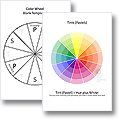
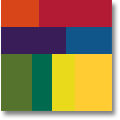

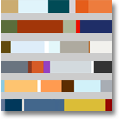
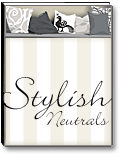
New! Comments
Have your say about what you just read! Leave me a comment in the box below.